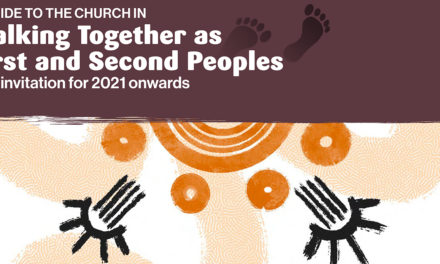My wife, Heather, and I together with Ros and Gavin Faichney visited the Kimberley region from May 17 to 29. The visit made me aware of my ignorance of the rich traditions and spirituality of the first peoples of this country and of my complicity in the suppression of these peoples.
On the first day of our tour we visited the Mowanjum Community about 10 km east of Derby. As a Presbyterian growing up in Western Australia in the 1950s, I was very familiar with the name Mowanjum. Its origins date back to 1912 when Rev R H Wilson established a mission 130 km north-west of the present site at Port George IV. The mission and its communities shifted several time until settling in its current site in 1956. The Mowanjum Community includes people from three main language groups: Wunambal, Worrowa, and Ngarinyin. It is managed by the Mowanjum Aboriginal Corporation and has its own Mowanjum Aboriginal Art and Cultural Centre which we visited. The following is a summary of my thoughts during my visit to this vibrant community centre.
In the early 1970s I was part of a CSIRO-Reserve Bank of Australia project to develop secure banknotes. A key to this project was the incorporation of optically variable devices (OVDs) into the banknote. OVDs are devices that change colour when viewed in differing lighting arrangements. There are a number of these in the current Australian banknotes.
I was asked to think of images that might be suitable to be portrayed on a banknote as an OVD. We had investigated the obvious ones: the Queen’s head, a well known bird or butterfly or an early explorer. I wondered if there was an indigenous image that would be suitable. This was many years before the internet so my search involved visits to various public libraries in Melbourne. I soon found striking images of Wandjina figures which had all the optical features needed to make a striking OVD. We made various OVDs of these images and incorporated them into some experimental notes.
At no point in those years did I inquire into the spiritual and cultural significance of these images to the Wunambal, Worrowa and Ngarinyin peoples. If I had done so I would have quickly come to the conclusion that it was quite inappropriate to incorporate such images in banknotes.
This experience at Mowanjum reminded me again of my ignorance of the beliefs and spirituality of the Wurundjeri and Bunurong peoples. I have committed myself to investigate this in the years ahead.
Tom Spurling, Presbytery Chair




